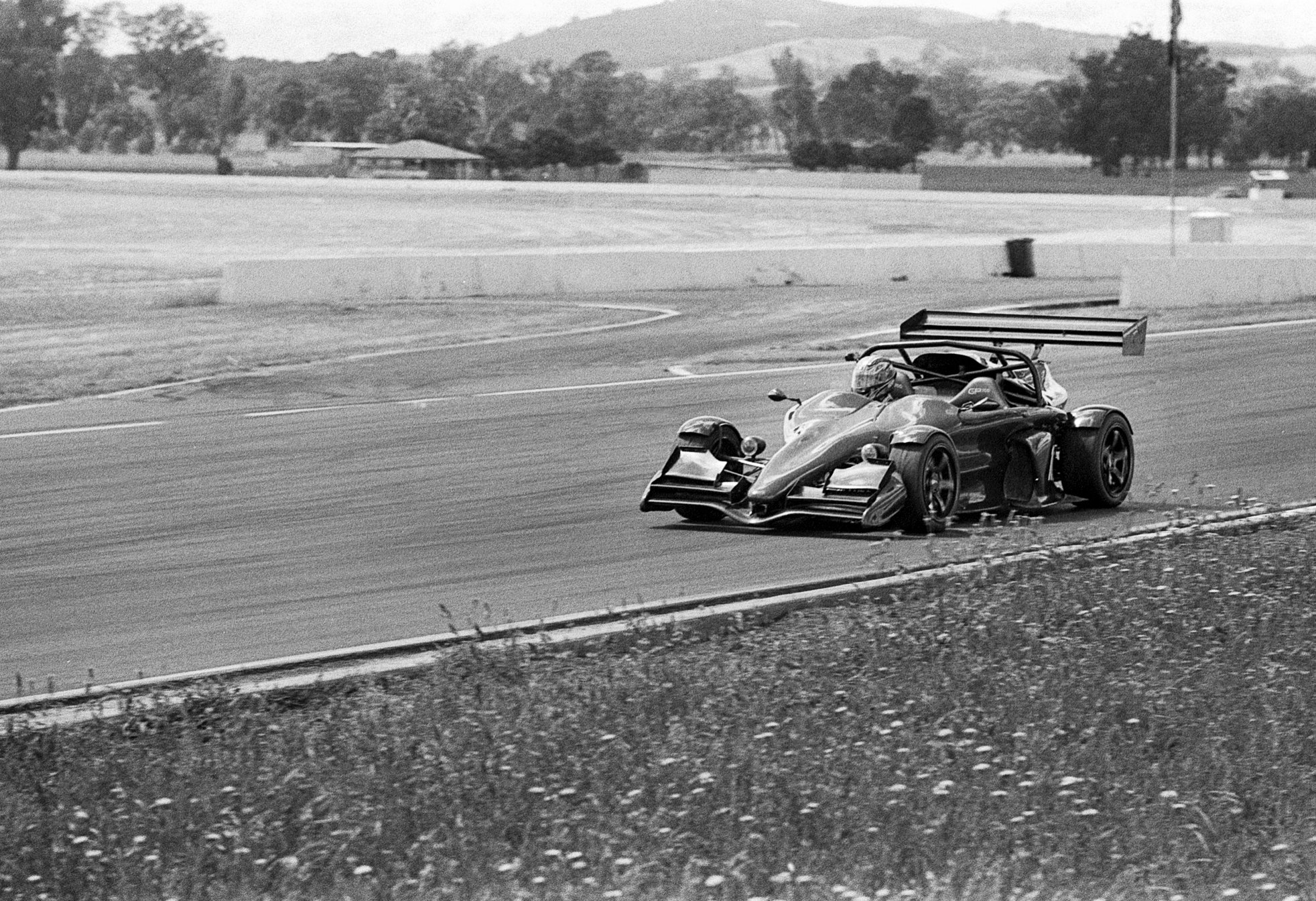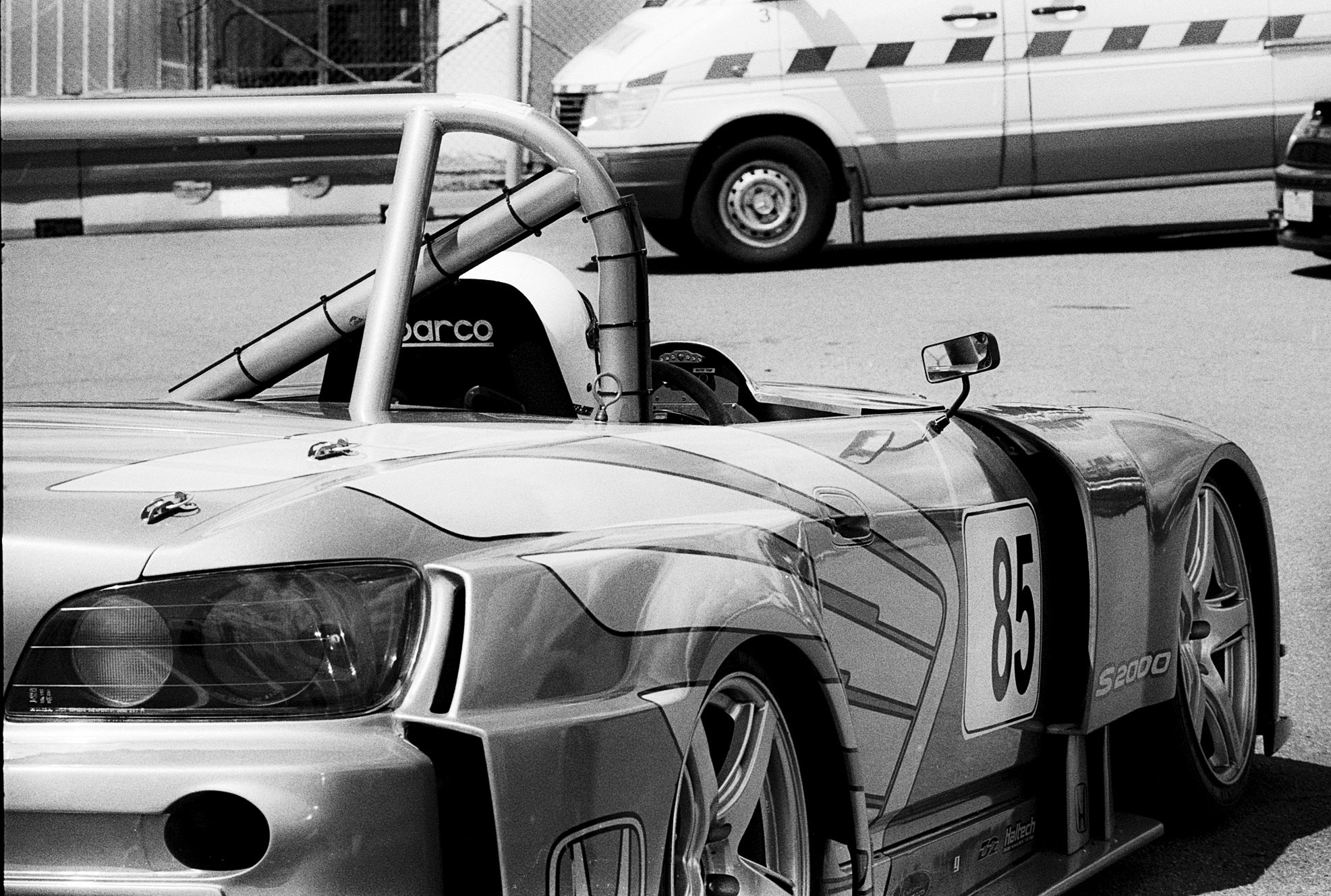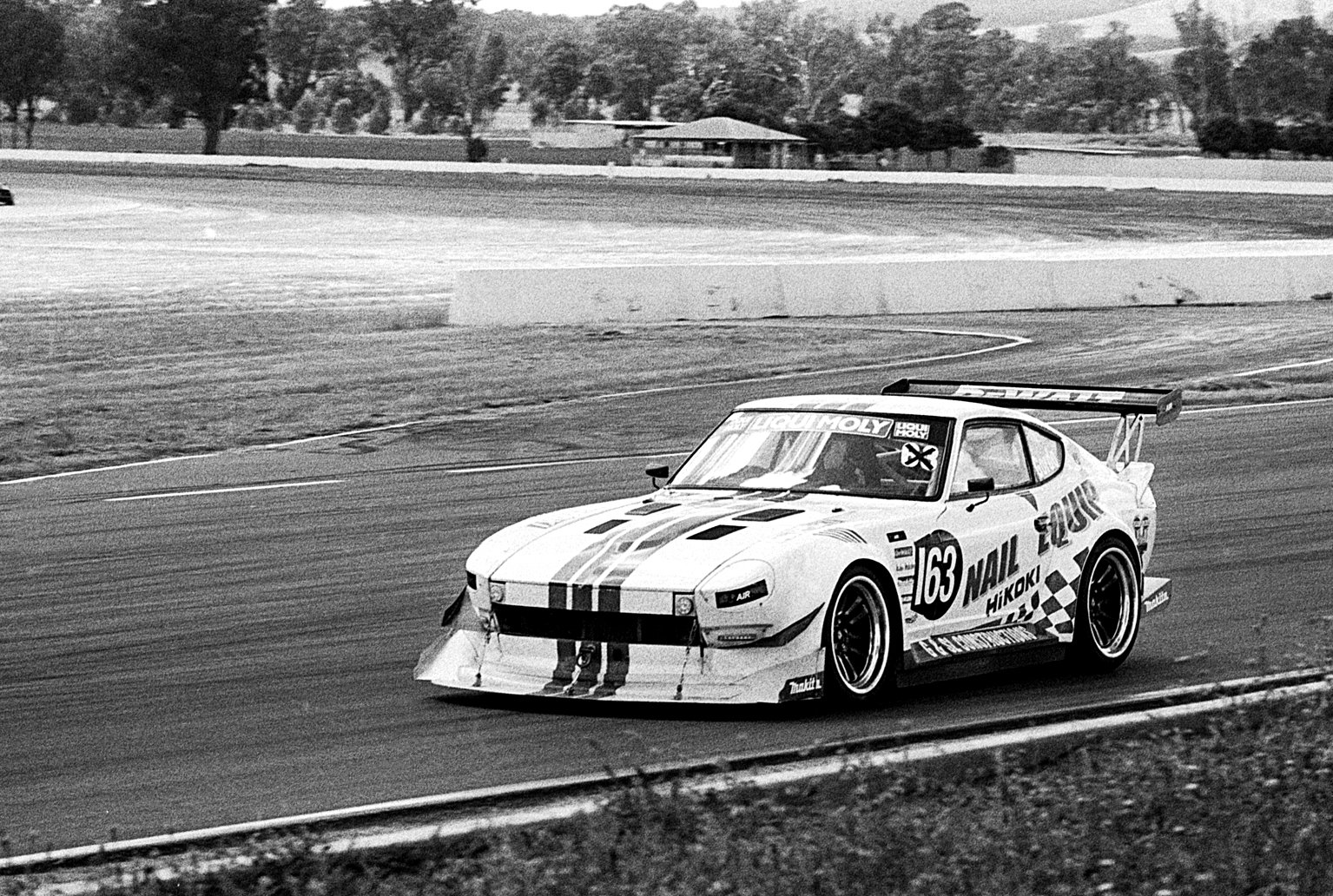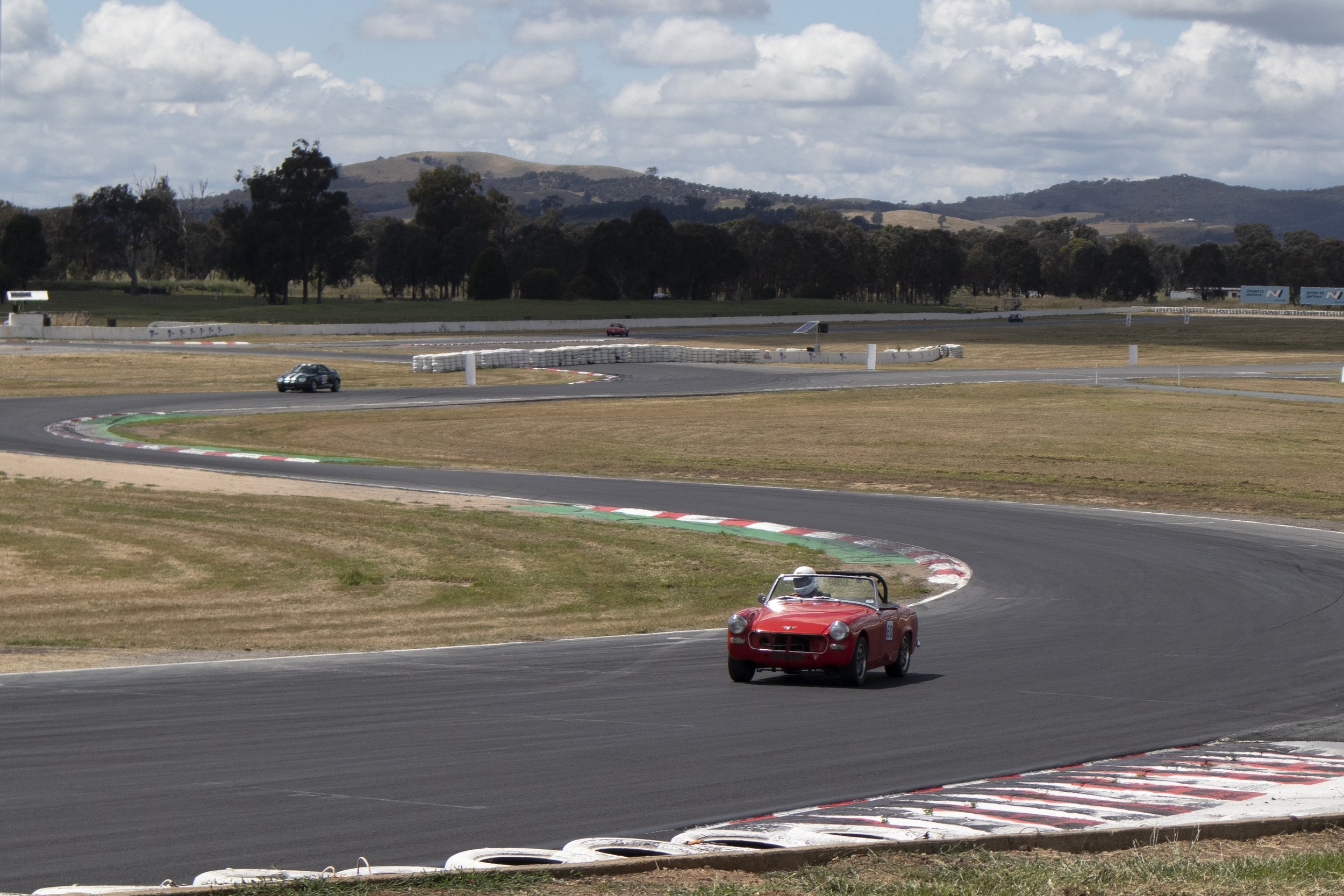I loaded the film backwards!
Hasselblad and film back
Getting back out there.
It was time to stop thinking and starting taking photos. So armed with the Hasselblad, Pentax Spotmatic, a couple of rolls of film and the Canon digital EOS M100 I set off for a car race event at Winton in Victoria. I’ve shot lots of motor sport speed events in the past but not recently using film. My available lenses were also significantly shorter than I would normally prefer. The Hasselblad has a 150mm f4, the Pentax a 135mm f1.4, whilst the Canon was limited to its kit lens at max of 45mm f6.3.
Now, straight away I knew the lenses would be a limitation for on track action, but the urge to try film was too strong and so I loaded up the Blad and got a fence position as close to the track as I could for some action shots.
Hasselblad
The Blad was fitted up with its accessory handle and with the prism view finder is surprisingly functional for panning. The angle of the viewfinder fits under a peaked cap which made it very comfortable to use. I loaded in a roll of Kodak Portra 400 and because it was bright full sun my meter suggested 1/500th sec was possible at apertures between f11 and f16. Another encouraging feature was the in-camera light meter was in full agreement with my Sekonic light meter, something that I had not expected given the Blad’s age.
Shooting was fluid but not particularly fast. Cloud movement meant initially checking on exposure to get a feel for the range of apertures that I could use since I wanted to keep the shutter speed as fast as possible given the size and handling of the camera. Panning to a pre-focussed position on the track was going well and I completed my roll of film.
This is when I realised my first error as I unloaded the completed roll of film. The narrow paper strip that is used to seal the film had torn away and the film backing paper didn’t look right. In my enthusiasm to get going I had loaded the film backwards! Probably I should have completed the Hasselblad gear guide and operation video before charging out to use the camera! So a dumb guy moment to start the adventure and I beat myself up for a few minutes for my lack of attention to this detail. (attempts to rewind the film in the camera were a disaster and so the film was lost)
On reflection, it is actually easy to get the film orientation confused when you haven’t used the camera for 10 years. I should have been more careful.
Pentax Spotmatic
So to plan “b” and the Pentax Spotmatic. What a lovely little camera this is. I had forgotten how easy it is to load and shoot. Again, manual pre-focus was the plan on a “front on” corner to make framing easier with the moving subjects. I had loaded a roll of Ilford HP5+ ISO 400 black and white negative film.
It is hard to get batteries for the meter in the Pentax these days so I just went with the Sekonic meter as before. The roll was a short one at 24 exposures which I bought for these try out days since it would be a waste to just fire off 36 random shots to hurry to get the film out of the camera at the end of the day. The viewfinder in the Pentax was the real surprise in bright sun. The central microprism area is very clear and easy to get to a sharp focus. (not the case in more subdued light indoors though.)



Canon EOS M100
Since I wanted the chance to share some images with friends who had their cars on the track I finally pulled out the Canon M100 and took the same kinds of shots with it as with the film cameras. This is where the immediacy of digital shines and annoys all at once. Clearly, I noted that my composition was limited by position and there was an ugly grate in the foreground of some shots. This was corrected straight away and I moved to a better location but it rammed home something that I knew previously as a working pro. You need to move mentally into a mode that is about image creation and not that of snapshot recording. By this I mean it is fine with digital to see the error after the fact and correct it but either way a potentially good or even priceless shot has been lost or compromised and relegated to post processing to try and retrieve it.
The M100 is a mirrorless camera with no viewfinder. In bright sun it is not always easy to see the screen to check for focus but I know the quality of the Canon autofocus so it is easy to trust it as long as the correct mode is selected. Here I made another rookie error! I set the camera to “Smooth Zone AF” with Continuous AF enabled. This should have been 1-Point AF with Continuous AF enabled which enables you to lock onto a specific car and track it into the frame more predictably. I dropped the ISO back to 200 on the M100 and used an aperture around f7.1. Shutter speeds ranged from 1/320 to 1/1250 sec.
Image quality with the M100 is actually better than my EOS 5D Mk11 SLR. If I had mounted the 100-400 zoom on it the images would have been exceptional. As it was they are ok, but not great for composition. Producing 24 megapixel RAW images means I can crop in to them quite a bit for web use but in my mind its a compromise.
You will never get a sermon from me about the virtues of analogue for taking more time and effort with composition compared to digital. It does clearly show me that I need to get my head back into that space where you see everything as the camera will render it. Sort of a muscle memory behaviour for your brain if you like and something that definitely comes back quickly with practice. So an interesting first day with a camera of any sort and a brutal re-introduction to the art and practice of photography. So with that mental kick up the seat of my pants I know what I need to do to create the type of images I will want to keep and share in the future.
Lessons learnt
Most cameras can take an acceptable photograph. Was the Hasselblad a good choice for motorsport? Well, I will have to try again with a correctly loaded roll of film to answer that. What I learnt was that irrespective of the camera/lens choice what let me down was the lack of effort and vision I put into my image creation. Every “man and his dog” was taking exactly the same images at the track on the day and I put no extra effort into my work to make it different or creative which shows just how out of practice I am and how easy it is to slip back into the behaviour of just snapping acceptable photo records.




